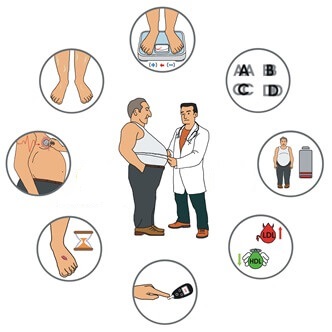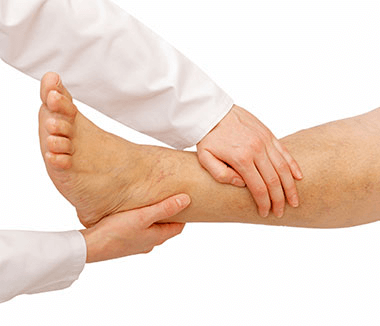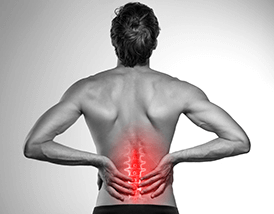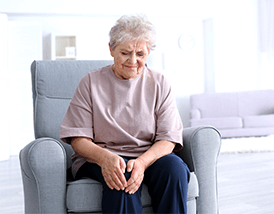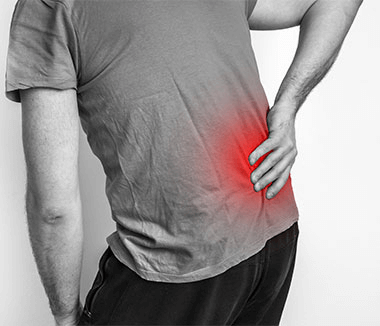Article written by: OANA PASCU, Physical therapist
Actualizat: 24-02-2025 / Publicat: 25-08-2020
.jpg)
Despite advances in psychopharmacology and established psychotherapeutic interventions, over 40% of patients with obsessive-compulsive disorder (OCD) do not respond to conventional treatment approaches. Current transcranial direct stimulation (TDCS) has recently been proposed as a therapeutic tool for the relief of treatment-resistant symptoms in patients with OCD. This review aimed to provide a comprehensive overview of the current status and future clinical applications of TDCS in patients with OCD.
A total of 77 patients received TDCS, with a wide variety of electrode assemblies, targeting mainly the dorsolateral prefrontal cortex and the orbitofrontal cortex in the motor area. TDCS appears to be a promising tool to reduce obsessive-compulsive symptoms, as well as comorbid depression and anxiety in patients with treatment-resistant OCD.
Obsessive-compulsive disorder (OCD) is a common and debilitating psychiatric condition that occurs in 2-3% of the population. Symptoms consist of unwanted intrusive thoughts and compulsive behaviors, leading to an inability to maintain social and occupational functioning.
The established treatments consist of a combination of psychopharmacology (especially the selective serotonin reuptake inhibitor - SSRI) and psychotherapeutic interventions, such as cognitive-behavioral therapy - CBT. Despite augmentation strategies with other psychotropic drugs and advances in psychopharmacology, it is assumed that nearly 40% of patients do not show a sufficient response to conventional treatments. Therefore, the development of new therapeutic approaches is justified.
Among recently developed therapeutic approaches, non-invasive brain stimulation (NIBS) techniques, such as transcranial stimulation, promise to alleviate symptoms and improve cognitive functioning in various psychiatric conditions.
![i.php?p=poza 9(1).jpg]()
TDCS consists of applying a weak direct current (1-2 mA) between two electrodes placed on the scalp of a subject. Neurophysiological studies have reported that depending on electrode polarity and current intensity, transcranial stimulation may increase cortical excitability in the vicinity of the anode, while cathodic tDCS may decrease it. The effects of TDCS are not limited to the area under the electrodes and could reach a widespread network of cortical and subcortical regions that are connected to the target region. The ability of tDCS to modulate a network is of particular interest, as abnormal activity and connectivity within the orbitofrontal-striato-pallidothalamic network is described in patients with OCD. Indeed, imaging studies in patients with OCD have shown abnormalities, which can be either hyper- or hypoxic activities in many regions of the brain along with a widespread network, including the orbitofrontal cortex (OFC), cingulate gyrus, thalamus, right and left cerebellum, and parietal cortex. These abnormalities were revealed at rest, as well as in symptom-provoking paradigms, according to studies. It has been hypothesized that the application of TDCS to these abnormal brain regions would lead to a decrease in obsessive-compulsive symptoms by modulating the basic abnormal brain network. The direction of the dorsolateral prefrontal cortex is based on studies that report beneficial clinical effects when stimulating this specific region of the brain in many psychiatric disorders, and on imaging studies, which report abnormalities of the cortico-striatal-thalamocortical pathways.
Twelve studies were performed that included clinical effects in OCD patients, including several case reports, open-label trials, and a randomized controlled trial including twelve OCD patients.
In the first case report, no significant effects were observed after 10 sessions of transcranial stimulation performed for 20 minutes with 2mA on OC symptoms, when the cathode was placed over the left dorsolateral prefrontal cortex and the extra cephalic anode (on the neck). Interestingly, the authors reported a significant decrease in depression and anxiety symptoms. Other studies have tried different electrode assemblies and have shown beneficial results on OC symptoms. Stimulation intensity was set at 2 mA in all studies and the duration of transcranial stimulation ranged from 20 to 30 min. The number of sessions varied, most studies had 10 or 20 sessions and one study had 15 sessions. They were delivered daily or twice a day.
In conclusion, a total of 77 patients with OCD received active TDCS with different electrode assemblies and most studies reported a significant effect on the symptomatology studied. Beneficial effects of TDCS on other symptoms that are often seen in patients with OCD, such as depression and anxiety, have also been reported.
Two studies reported that positive effects were observed at three months. Accordingly, a recent crossover study investigated the effect of a single session of TDCS on obsessive-induced anxiety in OCD patients. They reported a significant decrease in the severity of obsession-induced anxiety following applied TDCS.
Most of the studies included in the analysis were case reports and only two studies included more than 10 patients.
The interpretation of the results is thus limited by the small sample size. Moreover, tDCS parameters were very heterogeneous during the studies, in terms of electrode mounting, number of sessions, duration, and the interval between sessions (from 2 hours to one day). These assemblies were based on neuroimaging studies that showed hypoxicity in the cerebellum in patients with OCD. However, interesting discoveries have been made that try to identify the optimal position of the electrode. The choice to administer 10 to 20 sessions of 20-30 minutes was extrapolated in most of the data obtained in studies investigating the clinical effects of TDCS in patients with depression. However, it is not established that a longer duration and a longer number of sessions lead to a better and longer clinical effect.
The clinical characteristics of patients should be considered when discussing the role of TDCS in the treatment of OCD. OCD subtypes (obsessions and checks; symmetry and order; cleaning and washing; hoarding) were also heterogeneous between studies and could be an important factor to report in future studies. These differences may also explain the discrepancies observed between the studies in the term relief of symptoms, from no effect on OC symptoms to an 80% decrease.
In conclusion, only a few studies have investigated the effects of transcranial stimulation in OCD, but have shown promising results, some of them reporting a decrease of> 35%. This effect is considered clinically significant, considering the combination with specific medication.
At Centrokinetic you will find Dr. Edis Mustafa , a specialist in medical recovery, who specializes in tES therapy, treating over 200 patients, and none of them had any side effects. Dr. Mustafa did his doctorate in tES therapy, being the most experienced doctor in Romania.
Our specialist, Dr. Edis Mustafa, confidently recommends this new therapeutic approach, with exceptional personal results similar to those in various international studies published with patients treated so far.
Here you can find a detailed list of prices for transcranial electrical stimulation (tES) services.
Prices
You can find here a detailed list of the prices of individual services. But any correct recovery process is based on a mixed plan of therapies and procedures, customized according to the condition, stage of the condition, patient profile, and other objective medical factors. As a result, in order to configure a treatment plan, with the therapies involved and the prices related to the plan, please make an appointment here for an initial consultation.
.jpg)
.jpg)
.jpg)
.jpg)





